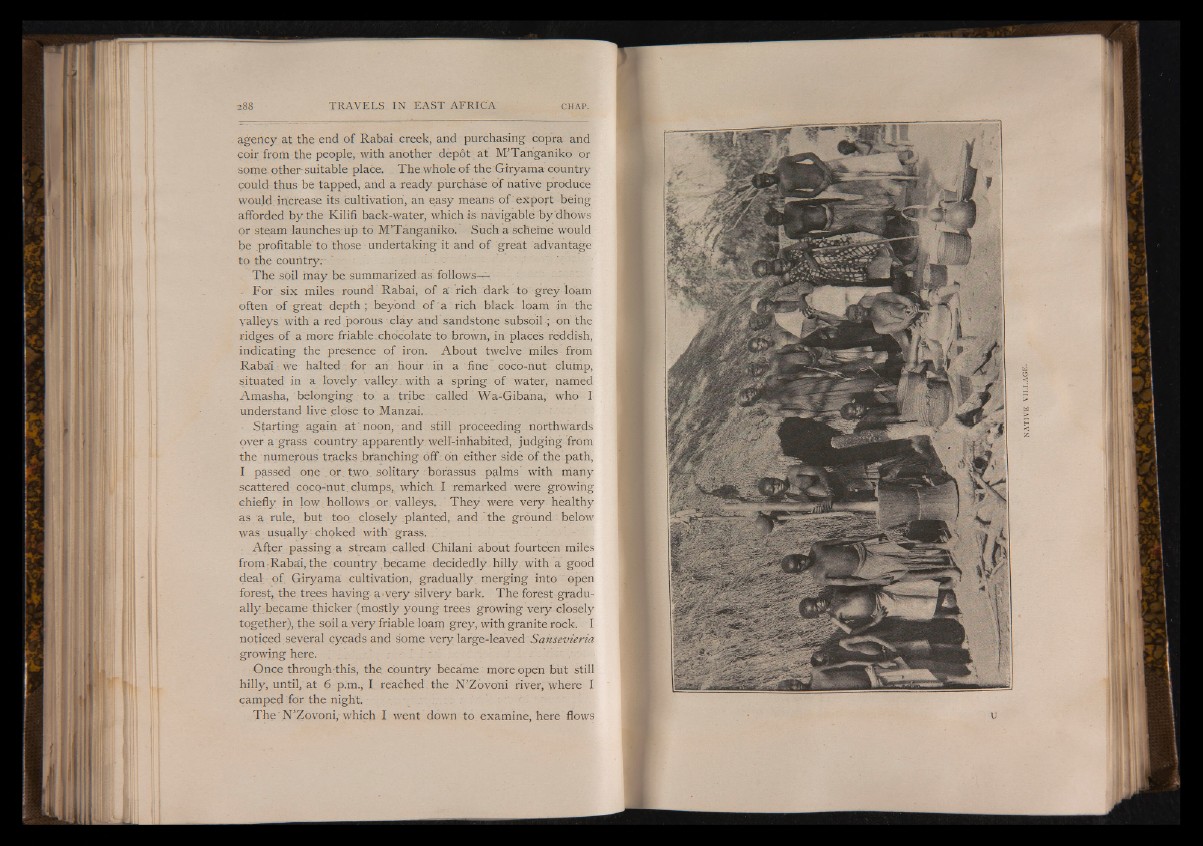
288 TRAVELS IN EAST AFRICA CHAP.
agency at the end of Rabai creek, and purchasing copra and
coir from the people, with another dépôt at MJTanganiko or
some other suitable place. The whole o f the Giryama country
could thus be tapped, and a ready purchase of native produce
would increase its cultivation, an easy means of export being
afforded by the Kilifi back-water, which is navigable by dhows
or steam launches.up to' M’Tanganiko. Such a scheme would
be profitable to those undertaking it and of great advantage
to the country,-
The soil may be summarized, as follows—1-.
. For six miles round Rabai, of a' rich dark to grey loam
often of great depth ; beyond of a rich black loam in the
yaljeys with a red porous .clay and sandstone subsoil ; on the
ridges of a more friahle chocolate to brown, in places reddish,
indicating the presence of iron. About twelve miles from
Raba’i we halted: for an hour in a fine coco-nut cluhip,
situated jn a lovely valley with a spring of water, named
Amasha, belonging - to a tribe called Wa-Gibana, who I
understand live .close to Manzai.
■ Starting again at ' noon, and still procçeding northwards
over a grass country apparently, well-inhabited, judging from
the numerous tracks branching off. on either side of the path,
I passed one or two solitary borassus palms" with many
scattered coco-nut: clumps,: which. I remarked were growing
chiefly in low hollows , or : valleys.. They were very healthy
as a rule, but too closely planted, and the ground below
was usually choked with' grass.
After passing, a stream called Chilani about fourteen miles
from-Rabai, the country became decidedly, hilly with a good
deal of Giryama cultivation, gradually, merging into open
forest, the trees having a very silvery bark. The forest gradually
became thicker (mostly young trees growing very closely
together), the soil a very friable loam grey, with granite rock. I
noticed several cyçads and some very large-leaved Sansevieria
growing here.
Once through this, the country became more open but still
hilly, until, at 6 p.m., I reached the N ’Zbvoni river, where I
camped for the night.
The ' N ’Zovoni, which I went down to examine, here flows